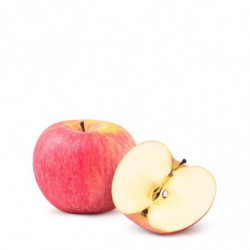History and Tradition
Blueberries have a rich history dating back thousands of years. Native Americans have long revered these berries for their medicinal properties and nutritional value. They were an integral part of their diet and were also used for medicinal purposes. The cultivation of highbush blueberries began in the early 20th century, leading to the development of the commercial blueberry industry we know today.
Unique Characteristics
What sets blueberries apart is their unique combination of attributes:
- Appearance: Small, round berries with a deep blue to purple color, often covered with a natural waxy coating called "bloom".
- Texture: Firm skin with a juicy, soft interior filled with tiny seeds.
- Flavor: A perfect balance of sweetness and tanginess, with subtle floral notes.
- Aroma: Fresh and subtly sweet, reminiscent of summer gardens.
Cultivation Process
Growing blueberries requires specific conditions and care:
- Soil Preparation: Blueberries thrive in acidic soil (pH 4.5-5.5) that is well-draining and rich in organic matter.
- Planting: Bushes are typically planted in early spring or fall, depending on the climate.
- Care: Regular watering, mulching, and pruning are essential for healthy growth and fruit production.
- Harvesting: Berries are usually hand-picked when fully ripe, typically in summer months.
Varieties and Culinary Uses
Blueberries come in several varieties and can be used in numerous ways:
- Fresh: Eaten as a snack or added to cereals, yogurt, and salads.
- Baked Goods: A popular ingredient in muffins, pies, pancakes, and other desserts.
- Preserves: Made into jams, jellies, and syrups.
- Frozen: Preserved for use in smoothies or as a year-round ingredient.
Their versatility makes them a favorite in both sweet and savory dishes across various cuisines.
Economic and Cultural Impact
The blueberry industry has seen significant growth globally. In the United States, blueberries are a major crop, with states like Washington, Oregon, and Michigan leading production. The fruit's popularity has led to increased cultivation in countries like Chile, Peru, and Spain, boosting local economies and creating job opportunities in agriculture and related industries.
Health Benefits
Blueberries are often touted as a superfood due to their impressive nutritional profile:
- High in antioxidants, particularly anthocyanins, which give them their blue color.
- Rich in vitamin C, vitamin K, and manganese.
- Good source of dietary fiber.
- Linked to improved heart health, brain function, and blood sugar control.
- May have anti-inflammatory and anti-aging properties.
Environmental Impact
Blueberry cultivation can play a role in sustainable agriculture. The perennial nature of blueberry bushes helps prevent soil erosion, and their flowers provide food for pollinators. However, like any crop, sustainable practices are crucial to minimize environmental impact.
Conclusion
Blueberries are more than just a delicious fruit; they are a testament to nature's ability to pack immense nutritional value and flavor into a small package. From their humble beginnings in North American forests to their current status as a global superfood, blueberries continue to delight palates and nourish bodies around the world. Whether enjoyed fresh off the bush, baked into a favorite dessert, or as part of a health-conscious diet, blueberries offer a burst of sweet-tart flavor and a wealth of health benefits with every bite.
Don't wait any longer to enjoy all the wonders cherries have to offer. Come and discover for yourself why this fruit has conquered hearts around the world. Let yourself be seduced by the magic of cherries and add a touch of sweetness to your life!























